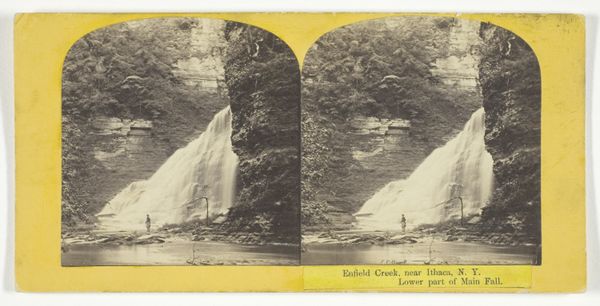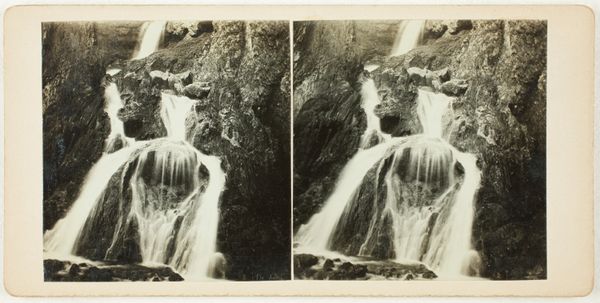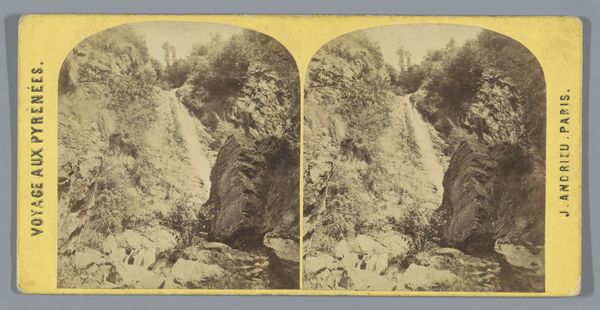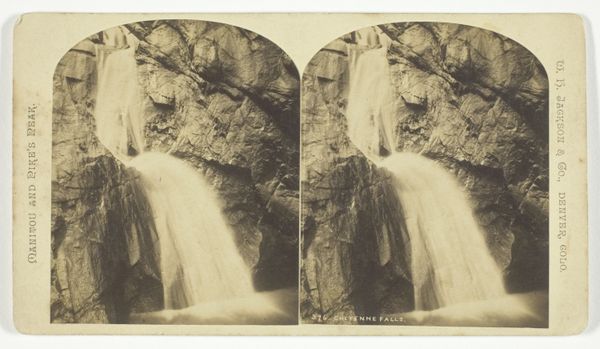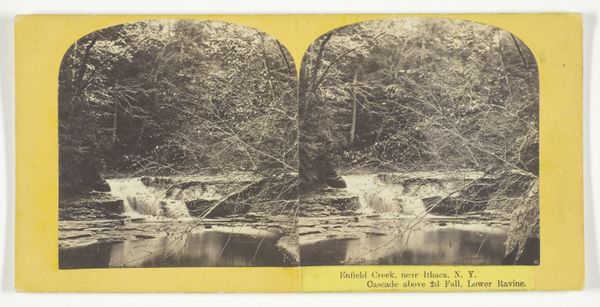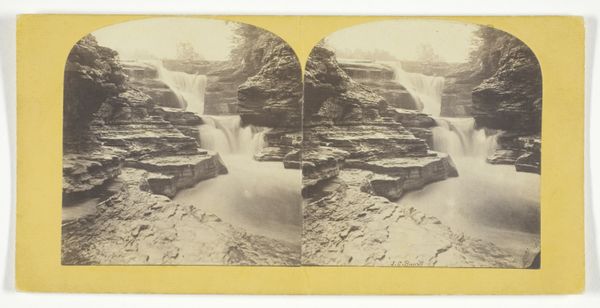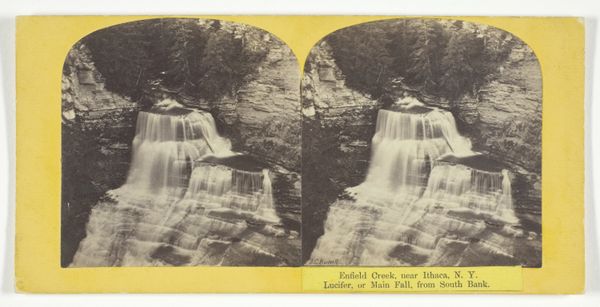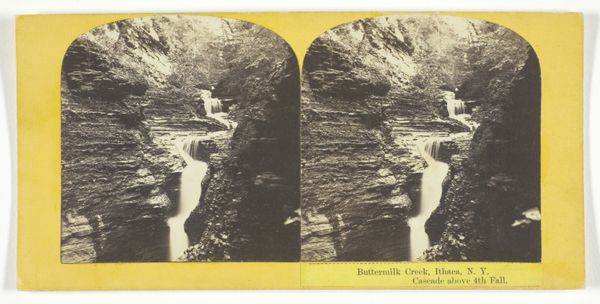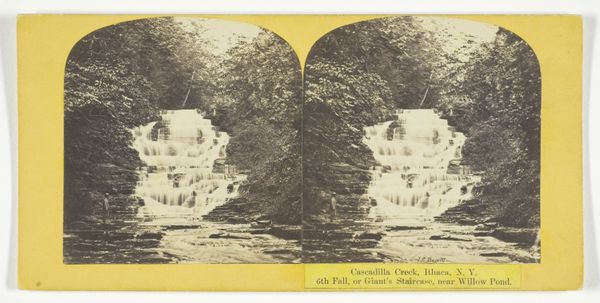
Enfield Creek, near Ithaca, N.Y. Lower part of Main Fall 1860 - 1865
0:00
0:00
print, photography, gelatin-silver-print
#
water colours
# print
#
landscape
#
photography
#
coloured pencil
#
gelatin-silver-print
#
hudson-river-school
Dimensions: 7.5 × 7.2 cm (each image); 8.4 × 17.1 cm (card)
Copyright: Public Domain
This stereograph of Enfield Creek was created by J.C. Burritt, using a process that would eventually transform the world. These photos were made using photography, which by the late 19th century had become a powerful tool for documentation and, of course, commodification. Stereographs like this one consist of two nearly identical photographs mounted side-by-side on card stock. When viewed through a stereoscope, the image springs into three dimensions, creating a heightened sense of realism and depth. The mass production of these images put far-flung places within easy reach for anyone, allowing them to experience a vicarious thrill, like actually being there in nature. The photograph is also a product of labor. From the photographer capturing the image to the factory workers producing countless copies, the commodification of experience reflects the intersection of technology, leisure, and labor in an increasingly industrialized world. By understanding photography as a craft, we can see how it impacted society’s relationship with the natural world, and question the line between artistic creation and mechanical reproduction.
Comments
No comments
Be the first to comment and join the conversation on the ultimate creative platform.
